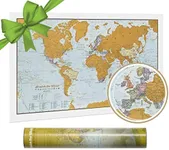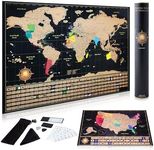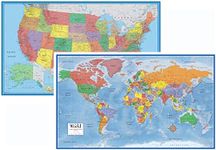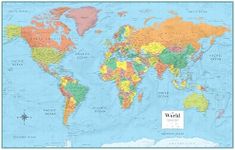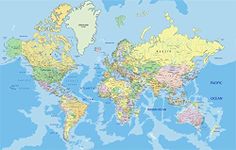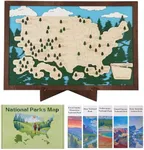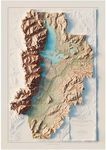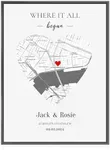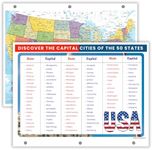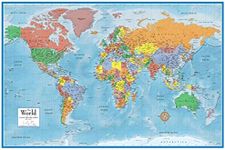Buying Guide for the Best World Maps
Choosing the right world map can be a fun and educational experience. Whether you're looking for a map to decorate your home, use for educational purposes, or plan your travels, there are several key factors to consider. Understanding these factors will help you select a map that best fits your needs and preferences.Type of MapWorld maps come in various types, such as political, physical, topographic, and thematic maps. A political map shows country borders and major cities, which is great for understanding geopolitical boundaries. A physical map highlights natural features like mountains, rivers, and deserts, ideal for geography enthusiasts. Topographic maps provide detailed information about terrain and elevation, useful for hikers and adventurers. Thematic maps focus on specific topics like climate, population, or economic activities, perfect for educational purposes. Choose the type of map based on what information you find most useful or interesting.
ScaleThe scale of a map indicates the relationship between distances on the map and actual distances on the ground. A large-scale map (e.g., 1:10,000) shows a smaller area in greater detail, which is useful for local navigation or detailed study. A small-scale map (e.g., 1:1,000,000) covers a larger area with less detail, suitable for getting an overview of the world. Consider how much detail you need and the purpose of the map when choosing the scale. For general reference, a small-scale map is often sufficient, but for detailed exploration, a larger scale might be better.
ProjectionMap projection refers to how the 3D surface of the Earth is represented on a 2D map. Different projections can distort shapes, areas, distances, or directions. Common projections include Mercator, which preserves direction but distorts size, making it useful for navigation; and Robinson, which balances size and shape distortions, providing a more visually appealing representation. Choose a projection based on what you prioritize: accurate navigation, visual appeal, or a balanced view of the world.
MaterialWorld maps can be printed on various materials, including paper, laminated paper, canvas, and even wood. Paper maps are lightweight and easy to fold, but they can tear easily. Laminated maps are more durable and can be written on with dry-erase markers, making them great for classrooms or planning. Canvas maps offer a more artistic and durable option for home decor. Wooden maps are unique and sturdy, adding a rustic touch to any space. Consider where and how you will use the map to determine the best material for your needs.
SizeThe size of the map is an important consideration depending on where you plan to display or use it. Large maps are great for wall displays, providing a clear and detailed view of the world, but they require ample space. Medium-sized maps are versatile and can be used for both display and practical purposes. Small maps are portable and convenient for travel or study, but they may lack detail. Think about the available space and how you intend to use the map when deciding on the size.
Design and AestheticsThe design and aesthetics of a world map can greatly influence its appeal and functionality. Some maps have a classic, vintage look, while others are modern and colorful. Consider the color scheme, font style, and overall design to ensure it matches your personal taste and the decor of the space where it will be displayed. A well-designed map can be both a functional tool and a beautiful piece of art.



